
Richard Conner was an American Civil War Union Army soldier who received the Medal of Honor for his bravery in action.
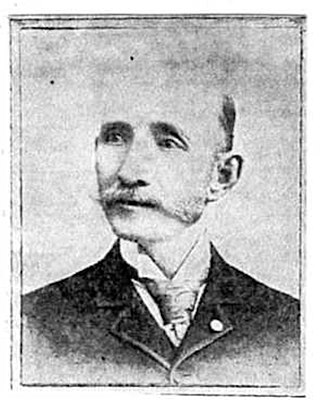
Edmund English was a Union Army soldier who received the Medal of Honor for his bravery at the Battle of the Wilderness in the American Civil War.

Alexander Kelly was an African-American coal miner and native of Pennsylvania who fought with the Union Army as a member of the 6th United States Colored Infantry Regiment during the American Civil War. He was awarded his nation's highest military decoration—the U.S. Medal of Honor—for his gallantry in the Battle of Chaffin's Farm, Virginia on September 29, 1864.
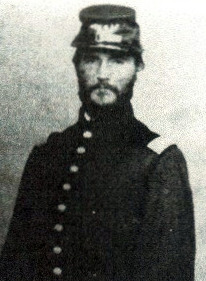
Nathan Huntley Edgerton was a Union Army officer who received the Medal of Honor for gallantry in the American Civil War.
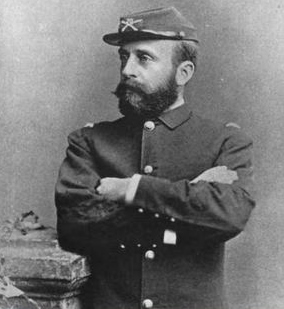
Sylvester Bonnaffon Jr. was a United States soldier who fought with the Union Army during the American Civil War as a first lieutenant with Company G of the 99th Pennsylvania Infantry. He received his nation's highest award for valor, the U.S. Medal of Honor, for his gallantry and leadership against Confederate troops during the Battle of Boydton Plank Road, Virginia on October 27, 1864. That award was conferred on September 29, 1893.

Frederick A. Lyon was a soldier in the Union Army and a Medal of Honor recipient for his actions in the American Civil War.
The 95th Pennsylvania Infantry was a volunteer infantry regiment which served in the Union Army during the American Civil War. This regiment was also sometimes referred to as Gosline's Zouaves because its members wore Zouave-style uniforms during the early portion of their service tenure. As the war progressed, the regiment's uniforms were modified, keeping the Zouave-style jackets and vests, but eliminating the scarlet pants, scarlet-trimmed kepis, and tan gaiters.

John Wainwright was a United States military officer during the American Civil War. A native of Syracuse, New York, he was awarded his nation's highest award for valor, the Medal of Honor, for his "gallant and meritorious conduct" while serving in the Union Army as a first lieutenant with the 97th Pennsylvania Infantry during the Second Battle of Fort Fisher, North Carolina on January 15, 1865.

James Sweeney was a Union Army soldier during the American Civil War. He received the Medal of Honor for gallantry during the Battle of Cedar Creek fought near Middletown, Virginia on October 19, 1864. The battle was the decisive engagement of Major General Philip Sheridan's Valley Campaigns of 1864 and was the largest battle fought in the Shenandoah Valley.
Thomas A. Anderson was a United States soldier and native of Pennsylvania who fought with the Union Army as a corporal in Company I of the 1st West Virginia Cavalry during the American Civil War. He was awarded his nation's highest award for valor, the U.S. Medal of Honor, for capturing the flag of a Confederate regiment during the Battle of Appomattox Station on April 8, 1865. The award was conferred on May 3 of that same year.
Private Charles D. Ennis was an American soldier who fought in the American Civil War. Ennis received the country's highest award for bravery during combat, the Medal of Honor, for his action during the Third Battle of Petersburg in Virginia on 2 April 1865. He was honored with the award on 28 June 1892.

Private William R. Fox was an American soldier who fought in the American Civil War. Fox received the country's highest award for bravery during combat, the Medal of Honor, for his action during the Third Battle of Petersburg in Virginia on 2 April 1865. He was honored with the award on 28 March 1879.
Corporal Thomas Cullen was an Irish soldier who fought in the American Civil War. Cullen received the United States' highest award for bravery during combat, the Medal of Honor, for his action at Bristoe Station in Virginia on October 14, 1863. He was honored with the award on December 1, 1864.
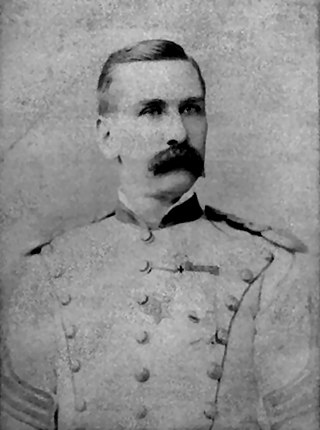
Joseph Fisher was an American soldier who fought in the American Civil War. Fisher received the country's highest award for bravery during combat, the Medal of Honor, for his action during the Third Battle of Petersburg in Virginia on 2 April 1865. He was honored with the award on 16 January 1894.

John Wallace Scott, also known as J. Wallace Scott, was a United States soldier who fought with the Union Army as a member of several Pennsylvania infantry units during the American Civil War. Severely wounded during the Siege of Petersburg in 1864, he was recognized for his meritorious service less than eight months later with his nation's highest award for bravery, the U.S. Medal of Honor, for capturing the enemy's flag while serving as captain of Company D of the 157th Pennsylvania Infantry during the Battle of Five Forks, Virginia on April 1, 1865. That award was conferred on April 27, 1865.
Leander T. "Lee" Herron (1846–1937) was a Corporal in the United States Army who received the Medal of Honor for heroism near Fort Dodge, Kansas on September 2, 1868.
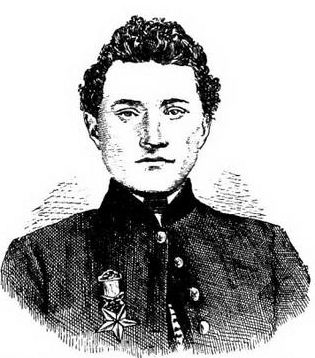
Patrick Henry Monaghan was a native of Ireland who fought for the federal government of the United States during the American Civil War as a member of Company F of the 48th Pennsylvania Infantry. He received America's highest award for valor, the U.S. Medal of Honor, for recapturing the regimental flag of the 7th New York Heavy Artillery on June 17, 1864 while fighting in the Siege of Petersburg, Virginia.
Franklin Hogan was a decorated hero of the Union Army in the American Civil War.

Stephen Rought was a sergeant in the United States Army who was awarded the Medal of Honor for gallantry during the American Civil War. He was awarded the medal on 1 December 1864 for actions performed in May 1864 in the Battle of the Wilderness in Virginia.
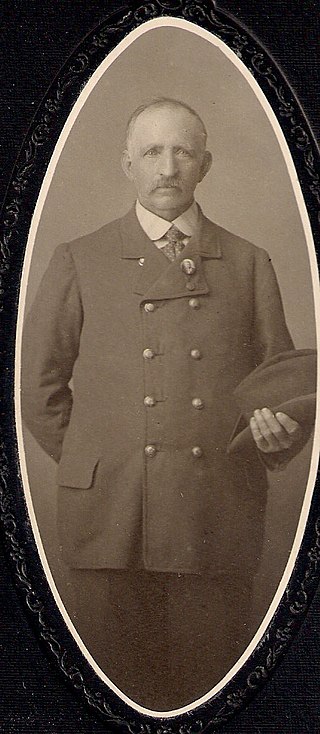
Emisire Shahan was a sergeant in the United States Army who was awarded the Medal of Honor for gallantry during the American Civil War. Shahan was awarded the medal on 3 May 1865 for actions performed at the Battle of Sailor's Creek in Virginia on 6 April 1865.













